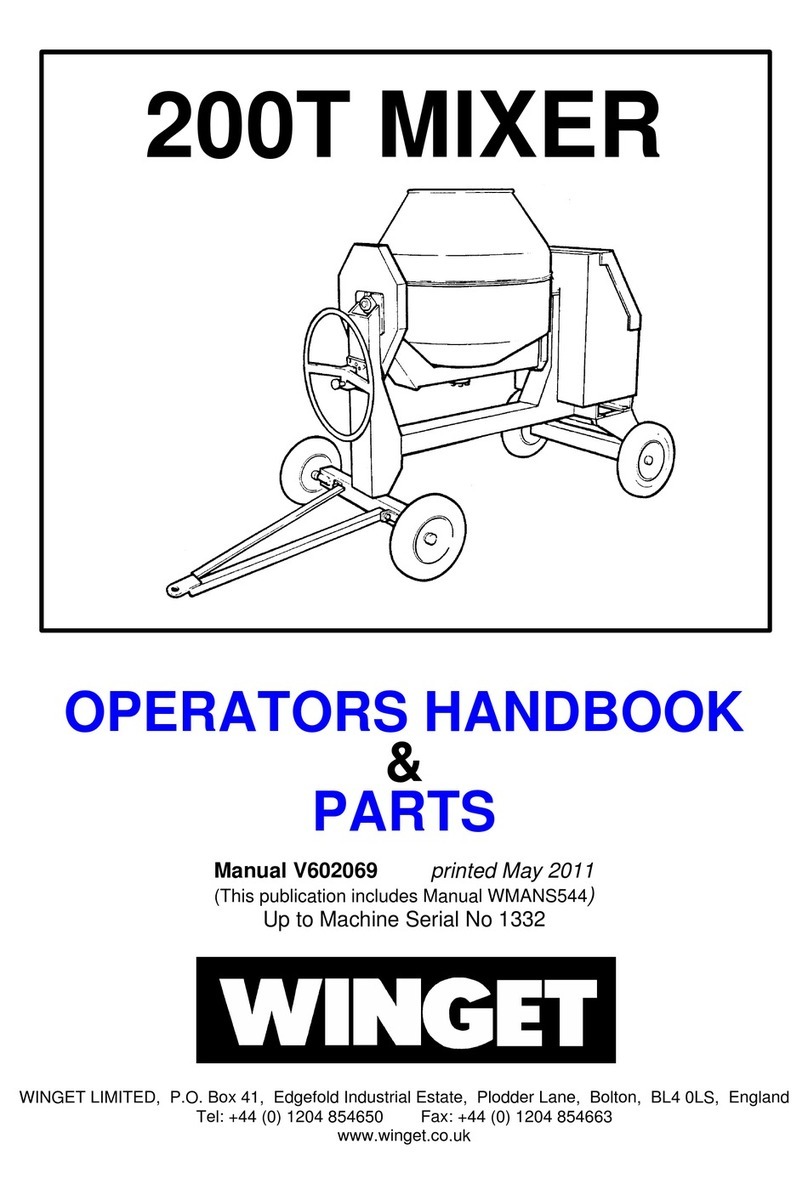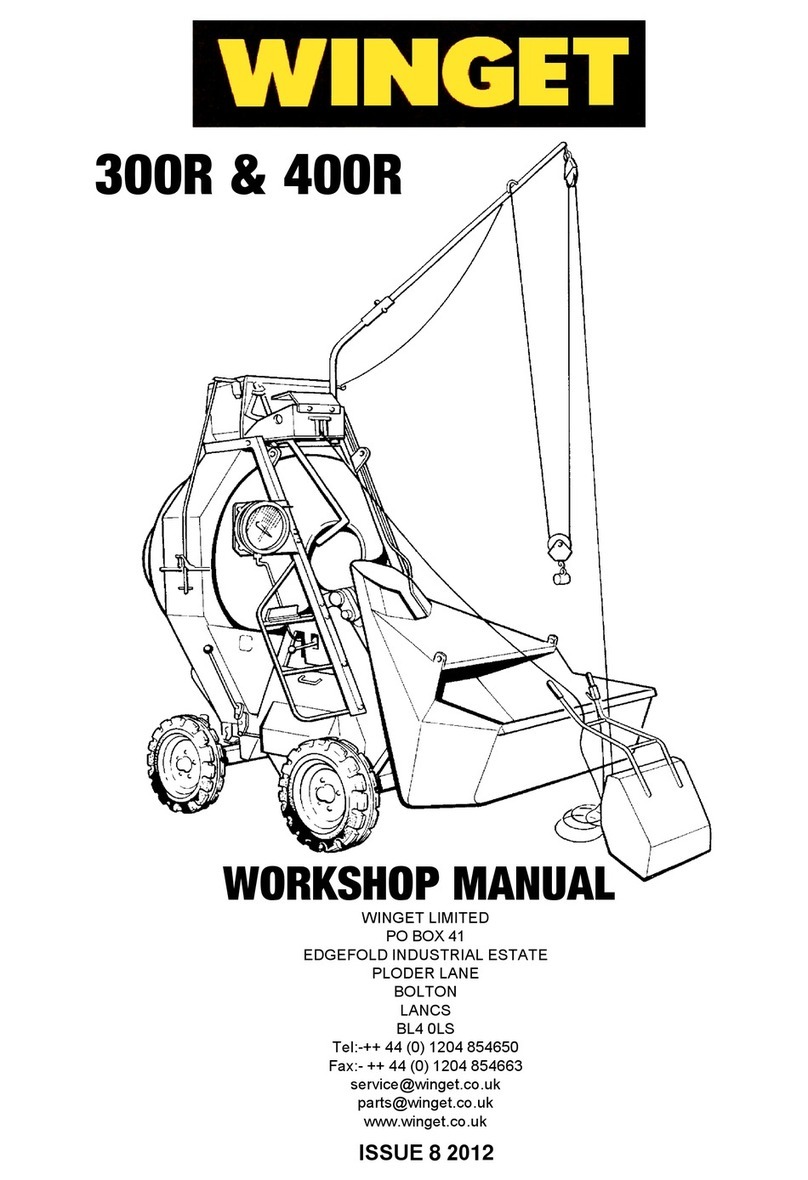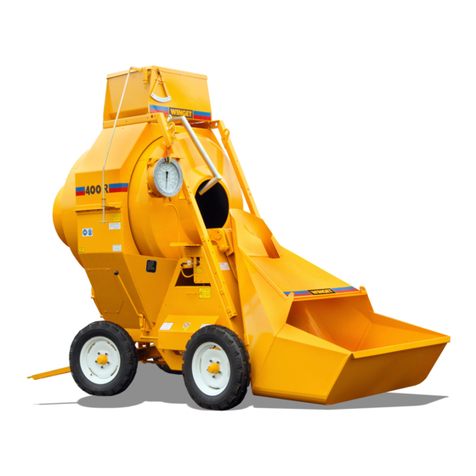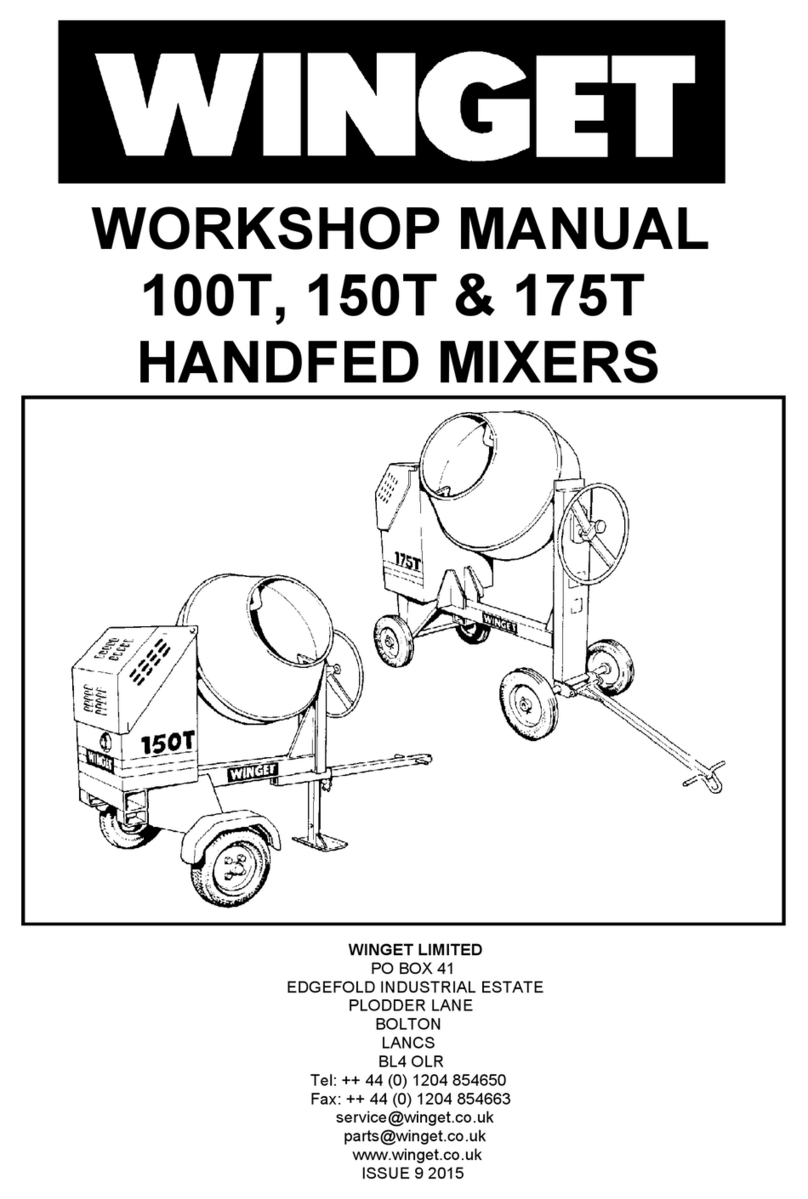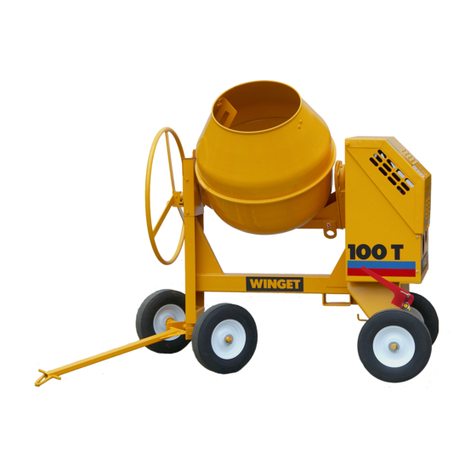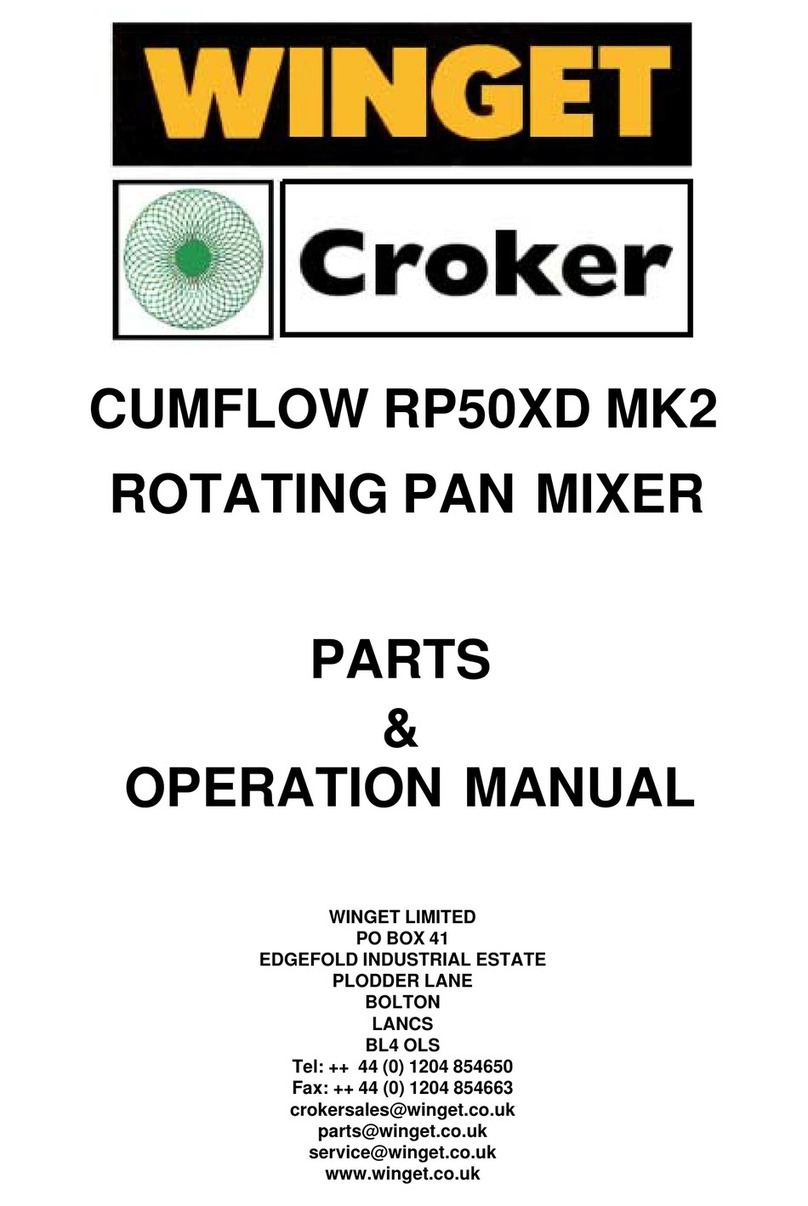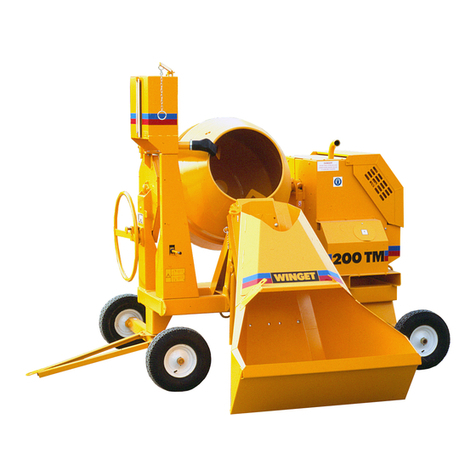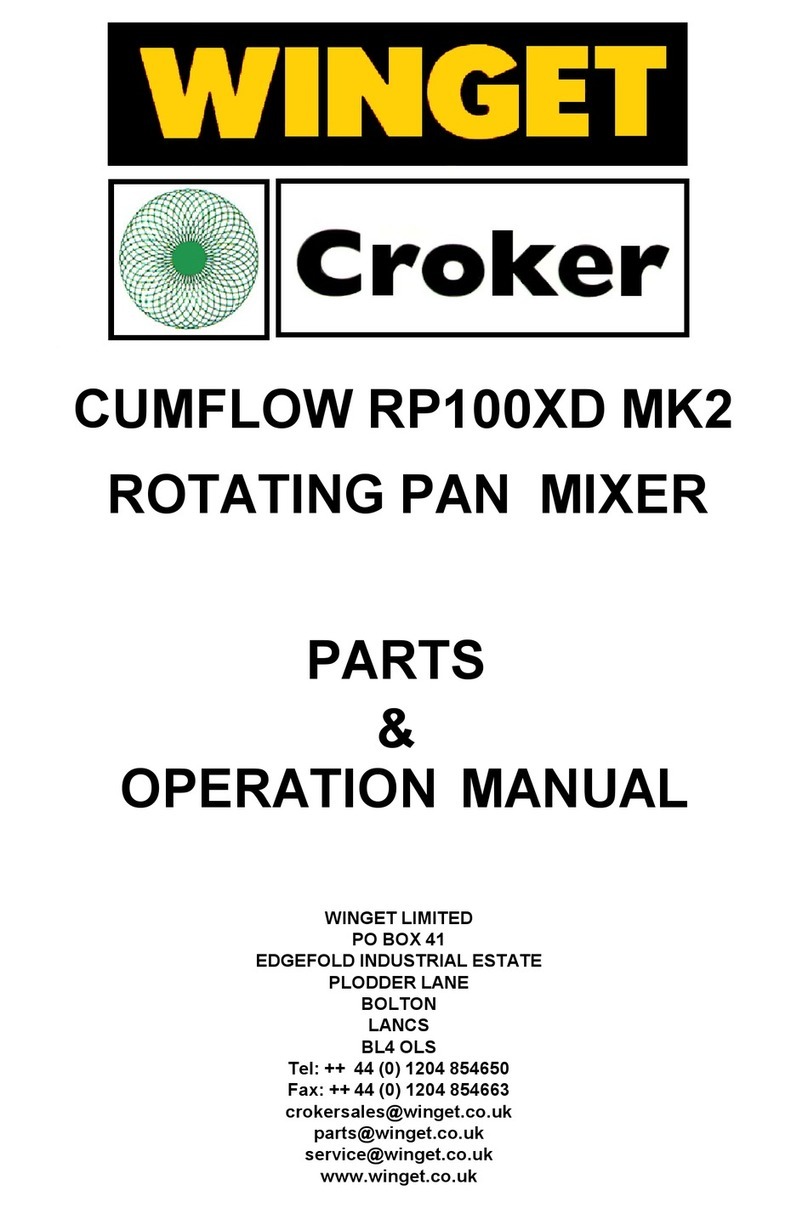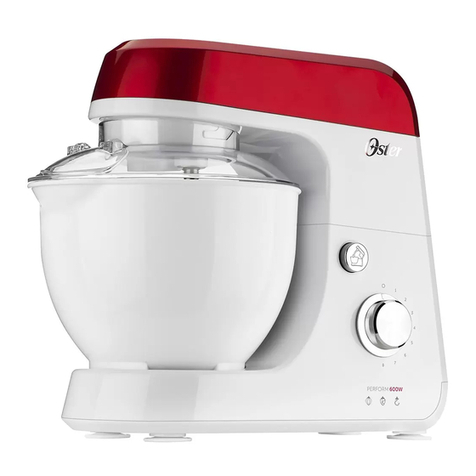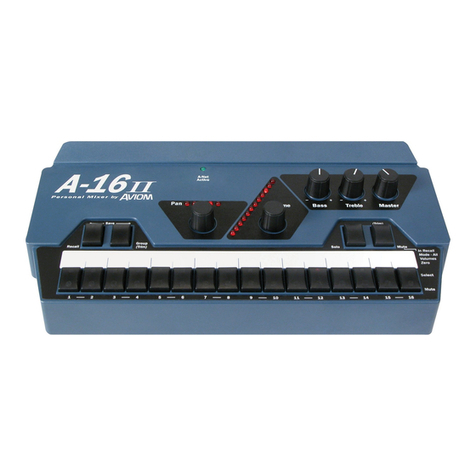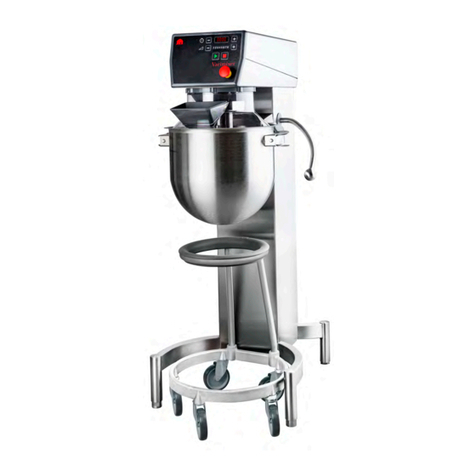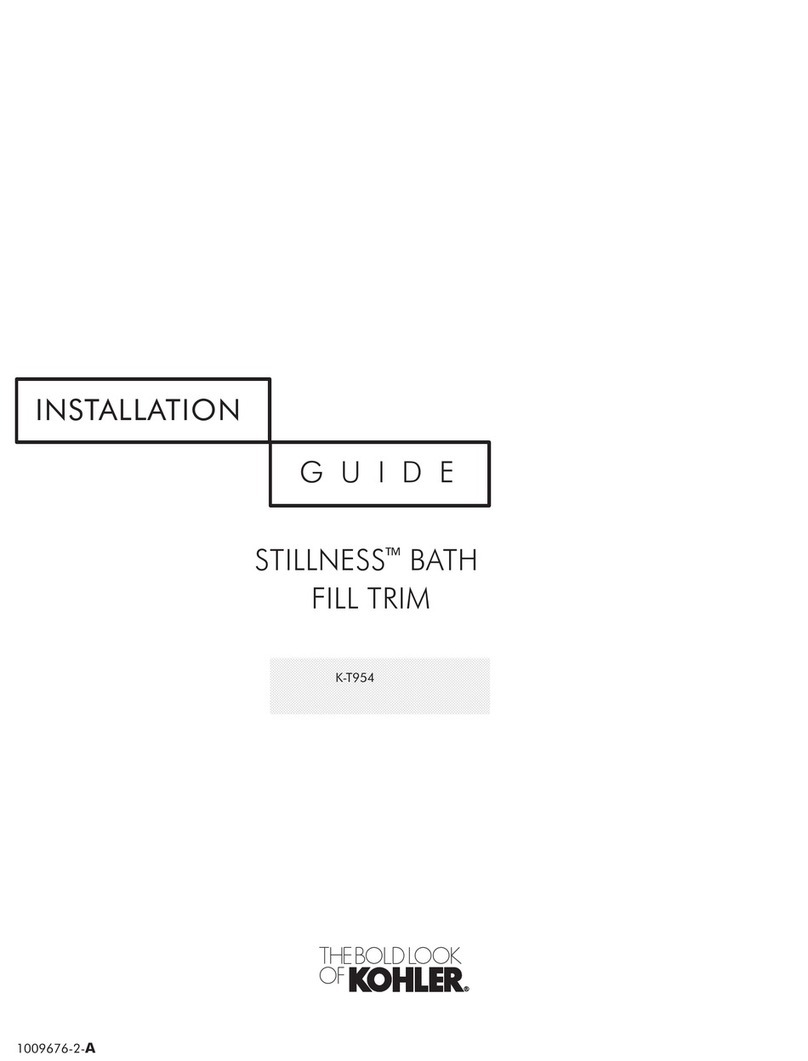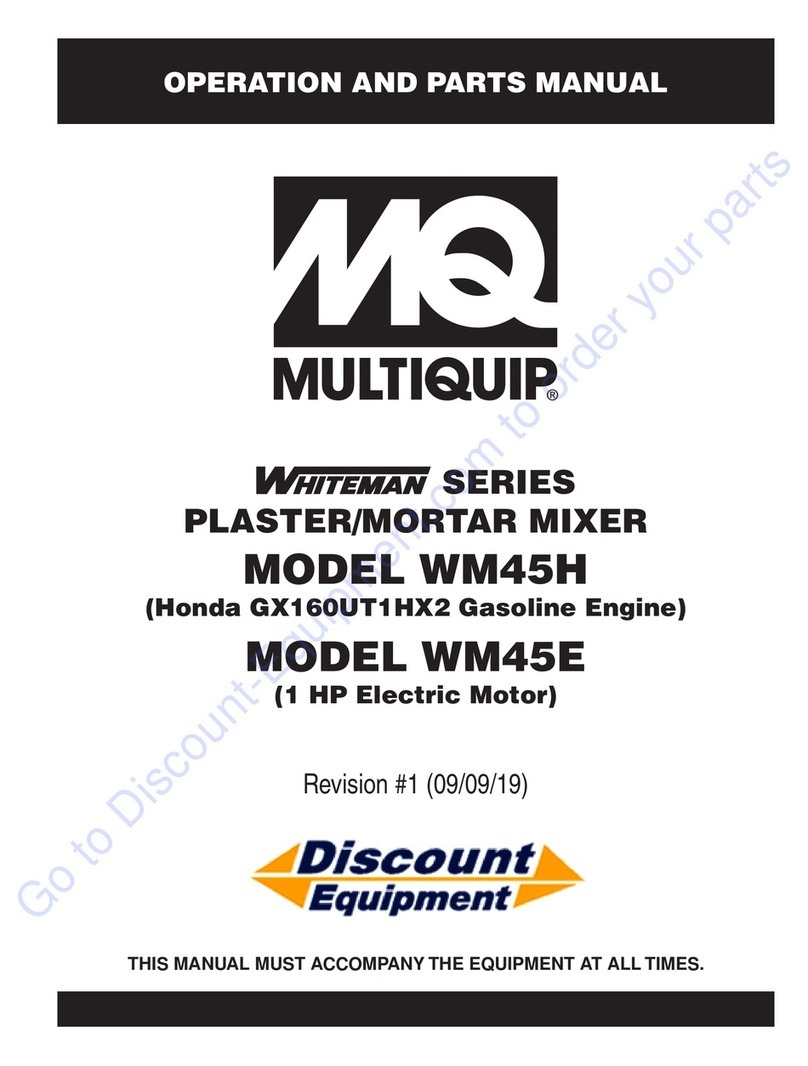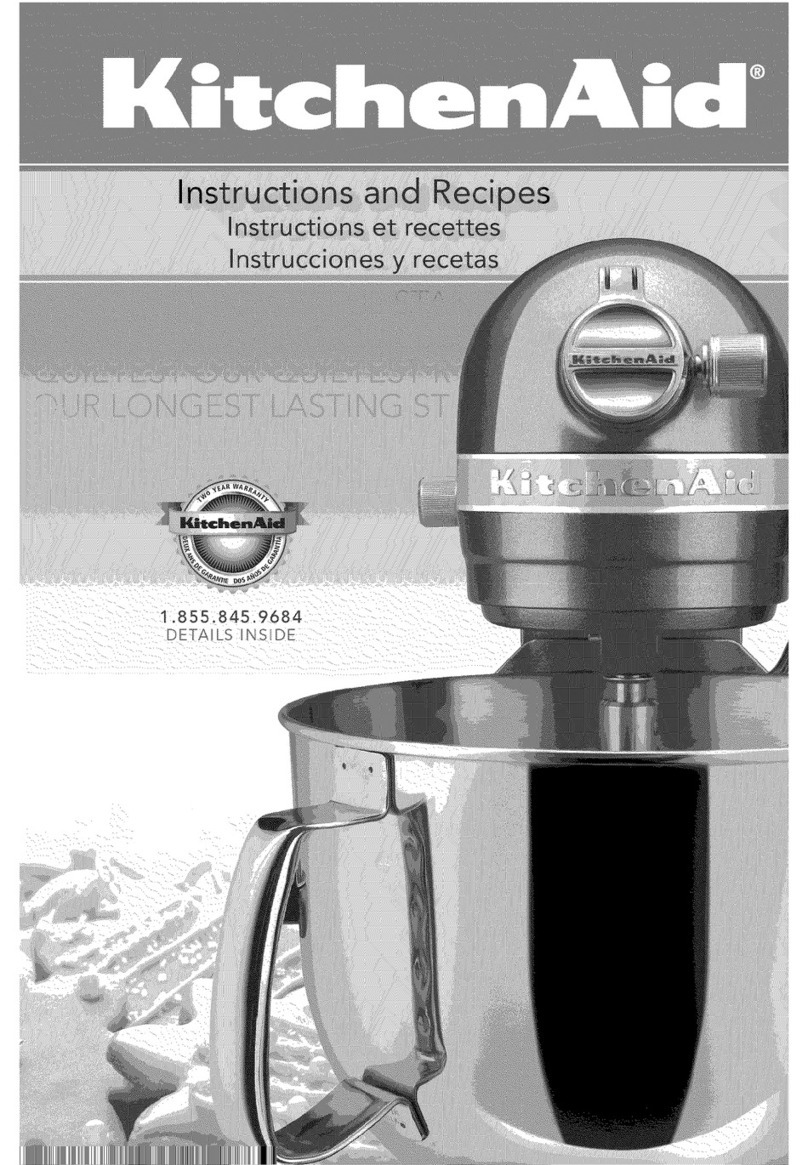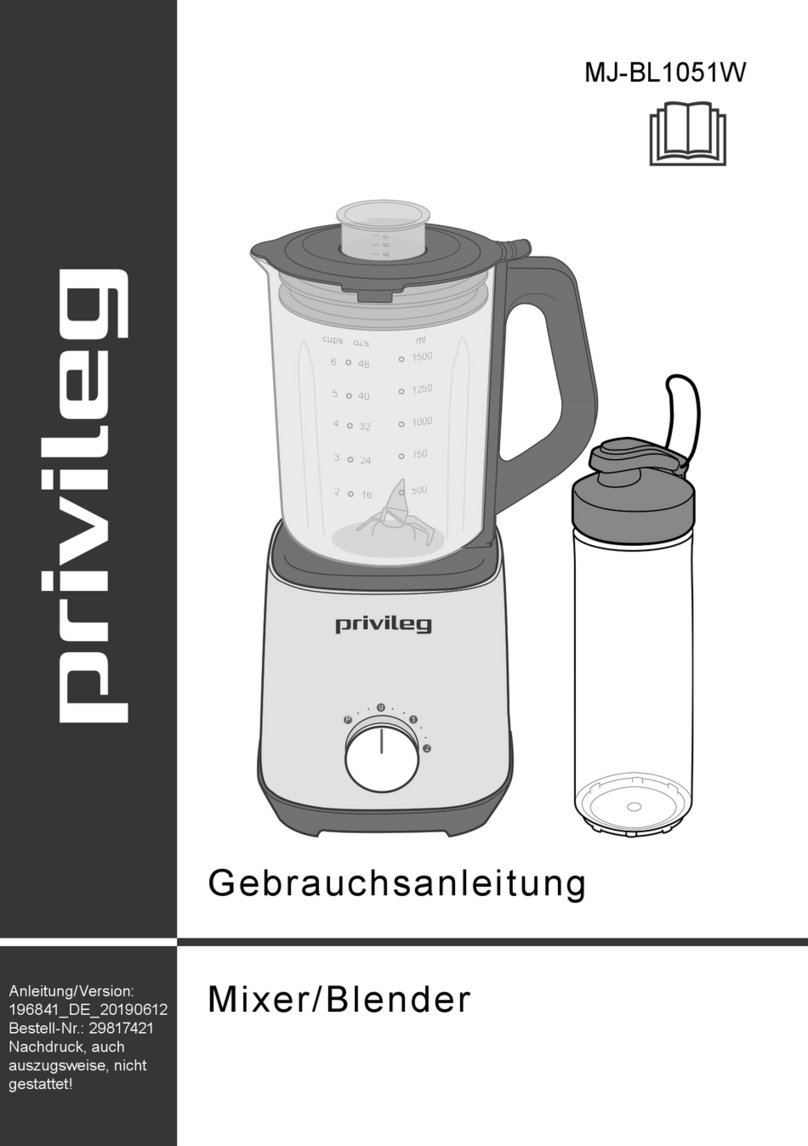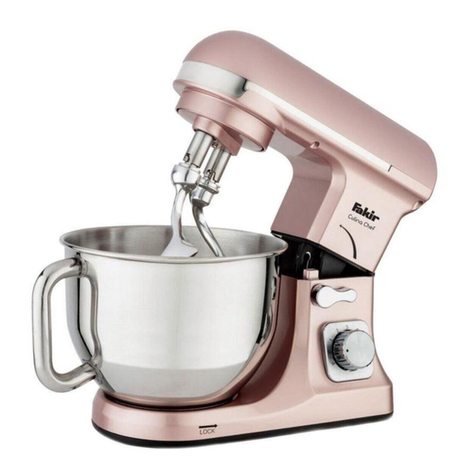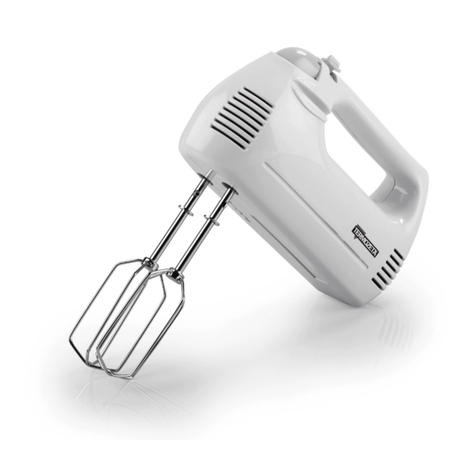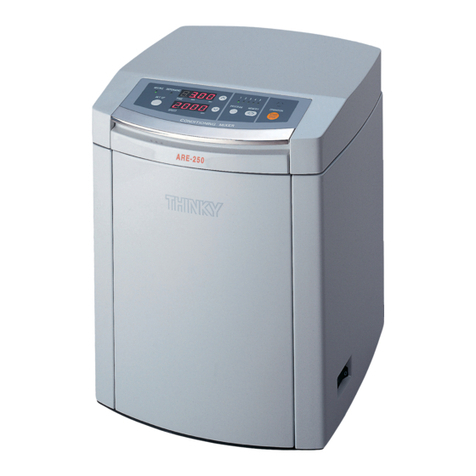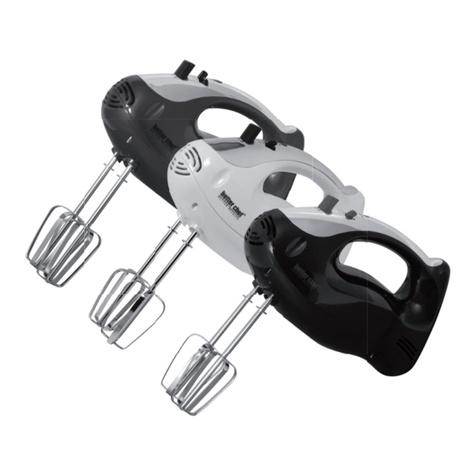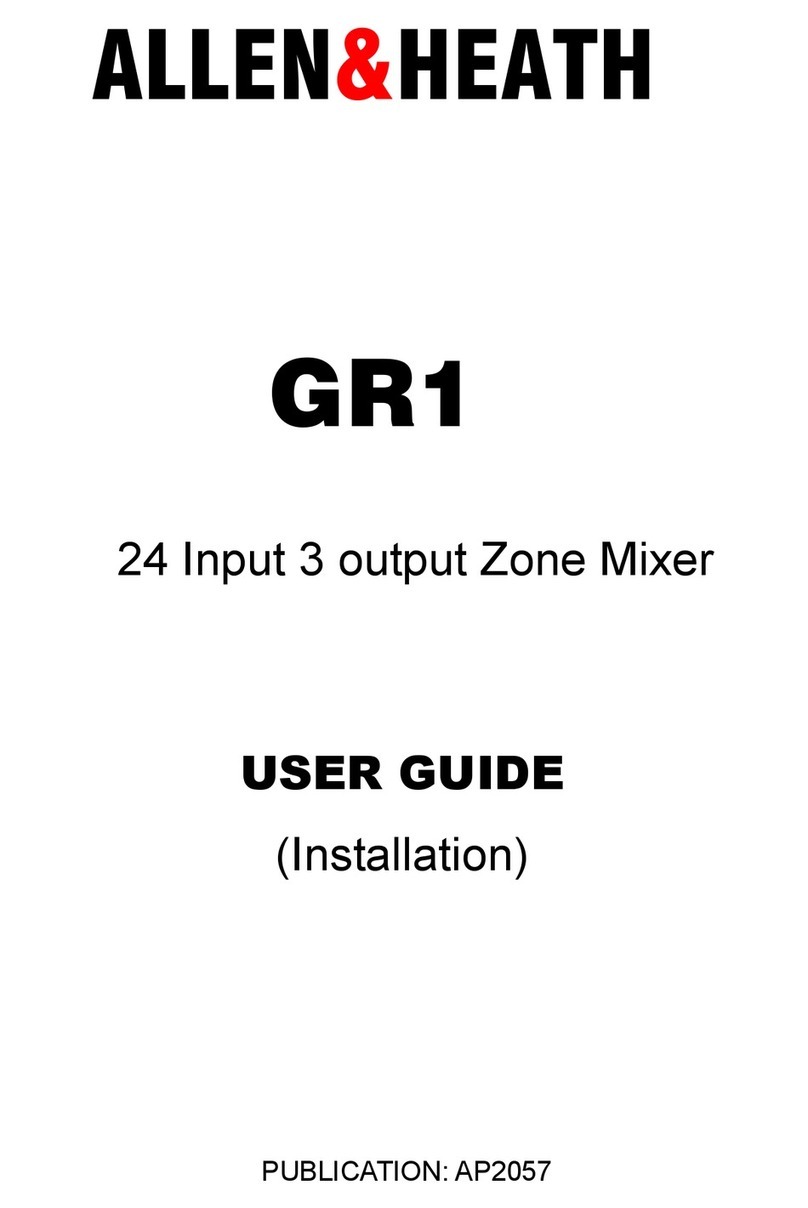
WORKSHOP MANUAL
Winget Hand Fed Mixers
Models: 200T
From 2011
Drum Removal
Attach suitable lifting equipment through the drum blades. Knock back the tabs on the
tabwasher securing the drum shaft setscrews below the trunnion. Remove the setscrews
and washers securing the shaft and flange. With the drum mouth upright
lift the drum assembly clear of the trunnion. It may be necessary to rock the trunnion via
the tiltwheel to free the drum shaft from the trunnion. Take care as the drum shaft may
suddenly release and come free allowing the drum to move without warning.
In exceptional circumstances it may be necessary to use a Two-Leg Puller/Pusher Tool
to assist in pushing the Drum Shaft through the Trunnion. When using such tools follow
the manufacturers instructions and take care as the drum shaft may suddenly release
allowing the drum to move without warning.
Replacement of Drum Shaft, Bevel Gear and Bearings
Remove the drum as described previously and turn upside down so that the assembly
stands on the open mouth of the drum. Before removing the bevel gear from the drum
base use suitably sized circlip pliers and remove the large circlip retaining the lower
shaft bearing into the gear.
Remove the setscrews securing the bevel gear and shaft assembly to the drum base,
use two of the setscrews as jacking as screws utilising the threaded holes in the bevel
gear and jack the assembly out of the base.
With the assistance of suitable lifting equipment lift the assembly onto a suitable
supporting surface and using a soft faced hammer or mallet knock the shaft back
through the bevel gear. Support the shaft in a suitable soft jawed vice and remove the
smaller circlip from the end of the shaft retaining the upper drum bearing, using a
suitable drift or puller remove both bearings from the shaft. Clean all the components.
Before fitting new bearings carefully remove the seals from the bearings and pack the
bearings with good quality grease, refit the seals, do not completely fill the bearings with
grease leave some room for expansion as the grease warms up in service.
Fit the new bearings to the shaft and retain the upper smaller bearing using a new
circlip. Clean out the drum centre shaft housing and smear a little anti-seize compound
round the circumference of the upper bearing seat within the housing.
Place the bevel gear on the drum base and loosely retain with the setscrews and
washers, apply threadlock to the screw threads before inserting, smear a little anti-seize
compound round the circumference of the lower bearing seat in the bevel gear.
Lower the shaft through the bevel gear and using a suitable mallet or soft faced hammer
knock the shaft fully home, fit the large retaining circlip and fully tighten the setscrews.
